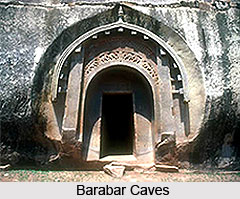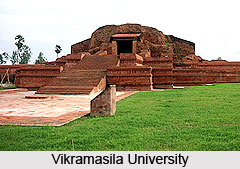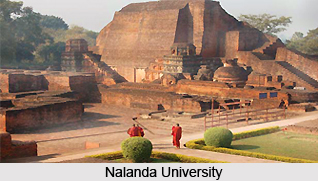 Archaeological sites in Bihar sketch the social and cultural scenarios of bygone era. Various archaeological excavations done in the state have furnished intriguing facts which establishes the state as a significant centre of education. Several forts, monasteries and sculptures have been discovered in this region which illustrates the various cultural influences owing to the reign of different rulers. Magnificent specimens of artistry have also been found in the architectural remains of the state.
Archaeological sites in Bihar sketch the social and cultural scenarios of bygone era. Various archaeological excavations done in the state have furnished intriguing facts which establishes the state as a significant centre of education. Several forts, monasteries and sculptures have been discovered in this region which illustrates the various cultural influences owing to the reign of different rulers. Magnificent specimens of artistry have also been found in the architectural remains of the state.
Barabar Caves
Barabar Caves is an important archaeological site of the state, located in Gaya district, which dates back to the Mauryan period. Some cave inscriptions show its association with the period of King Ashoka. Twin hills of Barabar and Nagarjuni houses these caves in groups of four and three caves respectively. They are the most ancient surviving rock cut temples of India. A number of rock cut Hindu and Buddhist sculptures have also been found in these caves.

Vikramasila University
Vikramasila University is situated in Bhagalpur district of Bihar. Excavations at this place have revealed the university was founded in 8th century. It has been identified as a significant centre of Buddhist learning. King Dharmapala had founded it to uplift the declining quality of scholarship at Nalanda.
Jalalgarh Fort
Ruins of Jalalgarh fort stand at Purnia district of Bihar. The 300 year old fort was established by Syed Muhammed Jalaluddin Khan. The relics of the fort exhibit both Hindu and Islamic architecture.
Kesariya
Kesariya is a small town in East Champaran district which houses a stupa constructed by King Ashoka. The stupa is included amongst the largest stupas of India.
Munger Fort
Munger district of the state houses the Munger fort on a rocky hillock along the bank of Ganga River. Archaeological evidences suggest that the fort was built during the rule of slave dynasty. Numerous historic as well as religious monuments are also present inside the fort.
 Nalanda University
Nalanda University
Nalanda University was the famous centre for higher education in Bihar. It prospered during the rule of Sakraditya of Gupta Empire and also received the patronage of other Gupta rulers, Pala emperors and Buddhists. Nalanda was a huge complex constructed with red bricks and spanned over a large area. Other structural remains comprise of temples and monasteries with artistic embellishments on stones and bricks.
Rohtasgarh Fort
Rohtasgarh fort is another ancient fort which stands in the town of Rohtas. It was constructed by Harishchandra, the ruler of Solar dynasty. Stone inscriptions on the fort reveal that it was under the possessions of a number of rulers and clans over time. According to the tribal belief, the fort belonged to them before the advent of British rule. Presently the fort is in ruins.
Vaishali
Vaishali is another significant archaeological site in Bihar. The place was the capital of bustling republican Licchavi state. It is also the birth place of Lord Mahavira. Vaishali is also famed for being the place where Gautama Buddha delivered his last sermon. The place has been the centre of both Buddhism and Jainism. Few ancient Buddhist monuments including stupas, viharas etc also grace the place.
Lauriya-Nandangarh
Lauriya and Nandangarh are popular archaeological sites which house two Ashokan pillars. Excavations of various mounds have furnished earthen burial memorials, terracotta figurines, copper coins, punchmarked coins, iron objects and many other artefacts. A manuscript containing Buddhist text has also been discovered which signifies its association with 4th century A.D. The site was first excavated in 1862 by A. Cunningham.



















